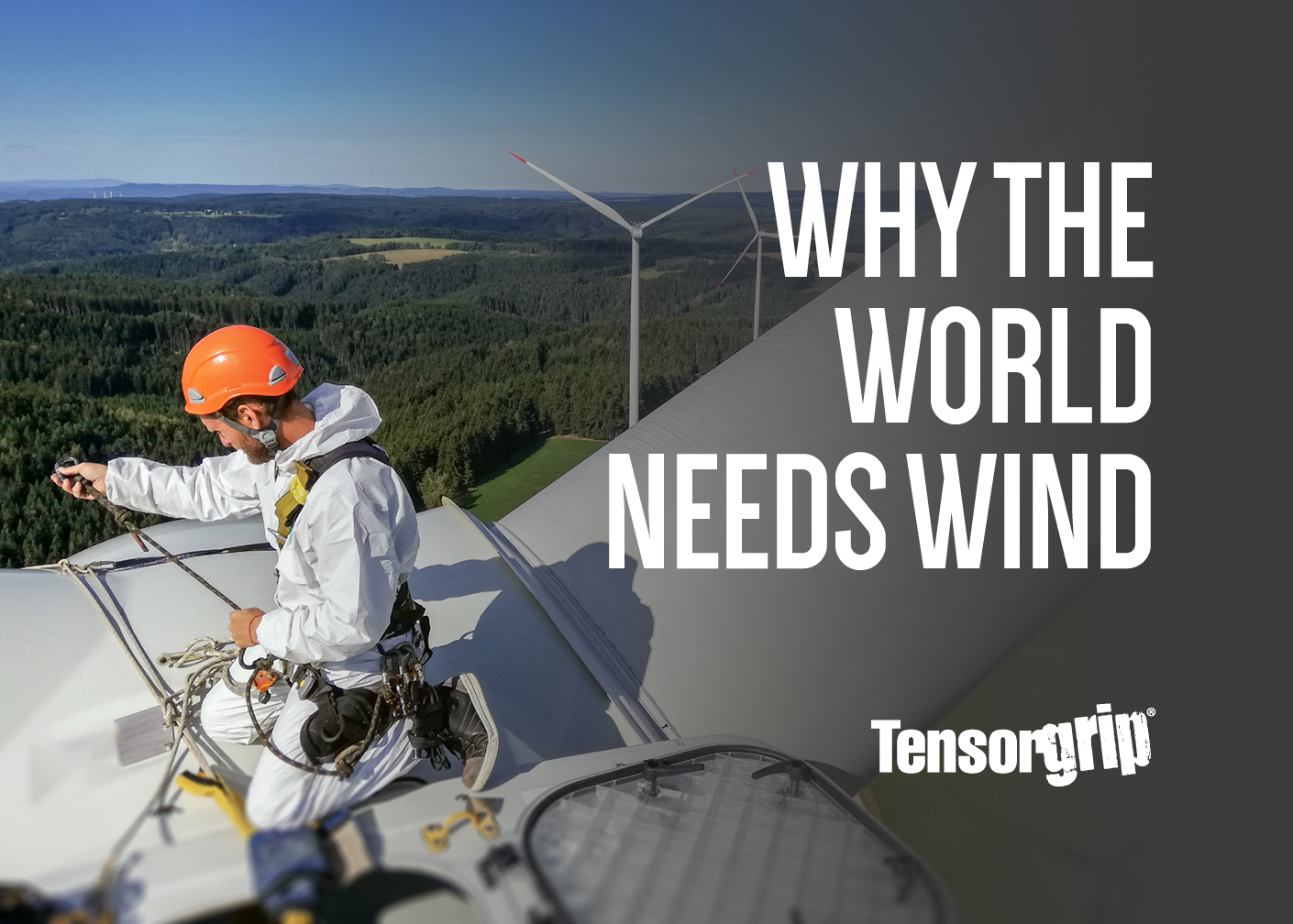The world of energy is changing. As the urgency around carbon emissions and fossil fuels continues to mount, organisations across a range of sectors are awakening to the importance of wind energy and the role it can play in a cleaner, more sustainable future. As a key partner in the manufacturing of wind turbines, TensorGrip TC Adhesives examines the benefits of wind energy for business, people and the planet.
Wind energy is nothing new. However, recent years - and months - have highlighted how the energy form will play a critical role in sustaining the health of our planet and those who inhabit it. Wind will drive the clean energy transition - a claim that was repeated by a succession of world governments at the landmark COP26 conference. However, regardless of wind energy’s uptake by world governments, it is still set to rise exponentially throughout the rest of the decade.
TensorGrip TC Adhesives: Raising Awareness, Driving Change
Despite the much-reported benefits of wind energy, leaders in the sector such as Ben Backwell, chief executive of the Global Wind Energy Council (GWEC) claim that there is still ‘a mountain to climb’ in its adoption, with significant improvements needed on market design. Notably, it has been argued that the private sector must scale up its work on the ground in upscaling wind energy activity.
As the world races to meet its climate objectives, the wind sector must continue to promote its benefits in any way possible. As a key adhesive partner in the manufacturing of wind turbine technology, TensorGrip TC Adhesives is playing a small, yet important role in driving this objective forward. With this challenge in mind, here’s our top 3 reasons for embracing wind across the world...
-
Wind is the Clean Energy the World Needs
Rising temperatures and sea levels point towards the urgency of a clean energy transition. Fortunately, wind energy is one of the cleanest energy sources available. Surprisingly straightforward, the power of wind rotates blades on a turbine which in-turn keeps the generator spinning. The voltage is ‘stepped up’ by a transformer, creating energy at an instant.
Aside from the energy required to construct them, wind farms have virtually zero carbon emissions. For each kilowatt-hour of electricity generated, wind farms produce less than 1/20th of a pound of carbon dioxide. The impact of this is huge: in just one year, the adoption of wind energy avoided the emission of nearly 200 million tonnes of carbon emissions that would have been otherwise released with the burning of fossil fuel.
-
Wind Energy is Profitable
Advocates of the continued use of fossil fuels often point to the commercial impact of moving toward renewable energy. However, wind energy is commercially viable, and this is supported by recently-published data from the Office of National Statistics. The facts and figures behind wind energy speak for themselves, and the economic future of wind is bright:
- Electricity generation from wind power in the UK has increased by 715% from 2009 to 2020, with turnover from wind energy reaching nearly £6 billion in 2019.
- Employment in offshore wind in the UK has increased significantly since 2015, with 7,200 full-time equivalent (FTE) employees in 2019.
- In 2020, the UK generated 75,610 gigawatt hours (GWh) of electricity from both offshore and onshore wind. This would be enough to power 8.4 trillion LED light bulbs.
There is another important fact to consider when reviewing these figures: the impact on health spending. As air quality increases with the declining use of fossil fuels, health sectors throughout the world are expected to spend less on treating respiratory illness caused by polluting gases.
-
The Industry is Innovating
The wind sector is to the forefront of technological innovation, and some of the transformations currently happening are simply amazing to observe. Turbine blades are getting bigger and stronger, and their rotor diameters are increasing year-on-year. This means that even more clean power can be generated from one single wind farm.
The wind farms we commonly see onshore typically generate an energy capacity that’s between 2 and 3 MW. Whilst this is significant, the turbines currently being developed offshore are approaching an impressive capacity of 15 MW. Given that wind turbines will generate more power, we can expect the space they require to reduce.
A significant area of innovation in wind energy is in their ability to be recycled, and several wind turbine manufacturers are driving research and innovation in this area. This requires recyclable components and materials, including the adhesives used in the manufacturing process. TensorGrip is pioneering innovation in this area, engineering adhesives that can be broken down, complementing any recycling process.
TensorGrip TC Adhesives: Solutions for a Sustainable Future
The time to invest and innovate in wind is now. TensorGrip TC Adhesives are keen to reach out and work with wind turbine manufacturers to drive a cleaner, more sustainable landscape in renewable energy. To find out how our adhesives can play a positive role, reach out to UK Category Sales Manager Darren Hill via darren.hill@quinglobal.com or Russia & EEMEA Sales Manager Mark Berry via mark.berry@quinglobal.com.
